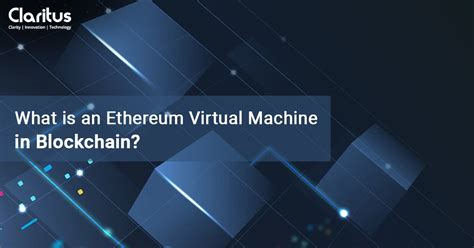Crypto
Cryptocurrencies have revolutionized the way people think about money and financial transactions. From Bitcoin to Ethereum, there are many different types of cryptocurrencies available in the market today.
One of the most popular cryptocurrencies is Ethereum. Ethereum is an open source blockchain platform that allows developers to build decentralized applications (dApps) on top of it. It is not just a currency like other cryptocurrencies; it is also a programmable blockchain that enables a wide range of use cases.
In addition to its role as a programmable blockchain, Ethereum has a virtual machine (VM) that runs Ether, the original cryptocurrency of the Ethereum network. This VM provides a sandbox environment where developers can write and run their own smart contracts without worrying about the security risks of the underlying blockchain.
Ethereum Virtual Machine
The Ethereum Virtual Machine is essentially a computer program that can be executed on top of an immutable blockchain. It allows developers to create, implement and execute smart contracts on the Ethereum network without worrying about the security or scalability limitations of the underlying blockchain.
Mantra (OM)
Mantra is a cryptocurrency project that aims to bring decentralized finance (DeFi) and stablecoins to mainstream users. Its native token, MANTRA, is used for transactions between DeFi platforms. MANTRA is pegged to the value of the US dollar, making it a stable currency.
One of Mantra’s key features is the use of a proof-of-stake (PoS) consensus algorithm, which is more energy efficient than traditional proof-of-work (PoW). This makes the Mantra a more eco-friendly option for users who prioritize sustainability.
Sets (STX)
Stacks is a decentralized platform that enables the creation and trading of non-fungible tokens (NFTs). NFTs are unique digital assets that can be stored, transferred and validated on the Stacks blockchain. STX is the original token of the Stacks network used for transactions between users.
Stacks has a built-in Oracle system that provides real-world data to smart contracts, allowing them to make informed decisions about supply chain management, energy consumption, and other complex issues. The platform also supports multiple blockchains and decentralized applications (dApps) on top of its own blockchain.
Conclusion

Cryptocurrencies like Ethereum, Mantra, and Stacks have the potential to disrupt traditional financial systems and create new opportunities for innovation and growth. As these platforms continue to develop and mature, we can expect to see more and more exciting developments in the world of cryptocurrency and decentralized finance (DeFi).


